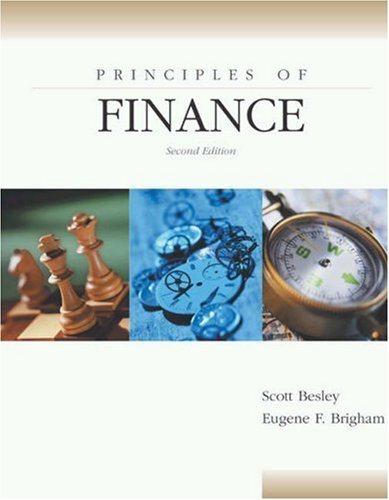Answered step by step
Verified Expert Solution
Question
1 Approved Answer
Bellwood Corp. is comparing two different capital structures. Plan I would result in 24,000 shares of stock and $82,500 in debt. Plan II would result
Bellwood Corp. is comparing two different capital structures. Plan I would result in 24,000 shares of stock and $82,500 in debt. Plan II would result in 18,000 shares of stock and $247,500 in debt. The interest rate on the debt is 4 percent.
| a. | Ignoring taxes, compare both of these plans to an all-equity plan assuming that EBIT will be $85,000. The all-equity plan would result in 27,000 shares of stock outstanding. What is all the equity EPS? (Do not round intermediate calculations and round your answers to 2 decimal places, e.g., 32.16.) |
| d-1. | Assuming that the corporate tax rate is 25 percent, what is the EPS of the firm? (need eps for each plan and total equity eps (Do not round intermediate calculations and round your answers to 2 decimal places, e.g., 32.16.) |
| d-2. | Assuming that the corporate tax rate is 25 percent, what are the break-even levels of EBIT for each plan as compared to that for an all-equity plan? (Do not round intermediate calculations.) |
| d-3. | Assuming that the corporate tax rate is 25 percent, when will EPS be identical for Plans I and II? (Do not round intermediate calculations.) |
Step by Step Solution
There are 3 Steps involved in it
Step: 1

Get Instant Access to Expert-Tailored Solutions
See step-by-step solutions with expert insights and AI powered tools for academic success
Step: 2

Step: 3

Ace Your Homework with AI
Get the answers you need in no time with our AI-driven, step-by-step assistance
Get Started


